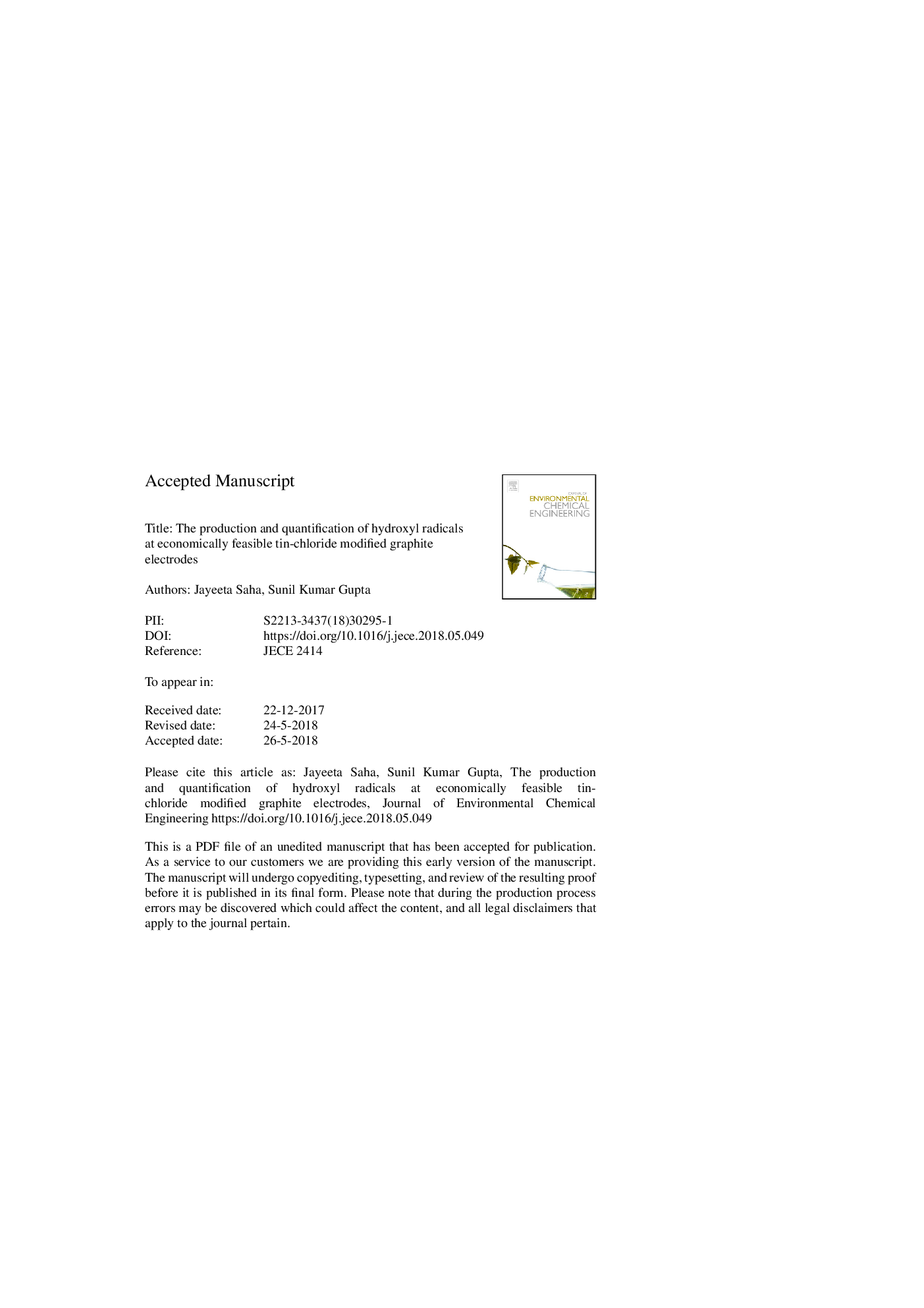| Article ID | Journal | Published Year | Pages | File Type |
|---|---|---|---|---|
| 6663837 | Journal of Environmental Chemical Engineering | 2018 | 23 Pages |
Abstract
A tin-chloride modified graphite electrode (Sn/G) was synthesized by the chemical deposition method. Cyclic voltammetry (CV) was used to examine the formation of hydroxyl radicals at the coated (Sn/G) electrodes. An electrochemical reactor was designed with the coated graphite electrode (Sn/G) and stainless steel as the anode and cathode respectively. The production and quantification of hydroxyl radicals at the (Sn/G) electrode was carried out in a UV-vis spectrophotometer. Salicylic acid (SA) was employed as the hydroxyl radical scavenger in the current study. The amount of hydroxyl radical formation was enumerated in terms of the resulted hydroxilated products: 2,3-dihydroxybenzoic acid and 2,5-dihydroxybenzoic acid. The optimal current intensity for hydroxyl radical formation was found to be 0.4â¯A since at higher current intensities 0.6â¯A, 0.8â¯A and 1â¯A corrosion rate was of the order 0.176, 0.381 and 0.386â¯mmâ¯hâ1 respectively. An E.coli killing efficiency of 99.99% was achieved with a contact time of 5â¯min at a current intensity of 0.4â¯A. To assess the applicability of the electrochemical oxidation process in the public water supply system, a cost analysis of the economics of the various commercially available electrodes revealed that the graphite electrode is the most lucrative viable alternative.
Keywords
Related Topics
Physical Sciences and Engineering
Chemical Engineering
Chemical Engineering (General)
Authors
Jayeeta Saha, Sunil Kumar Gupta,
